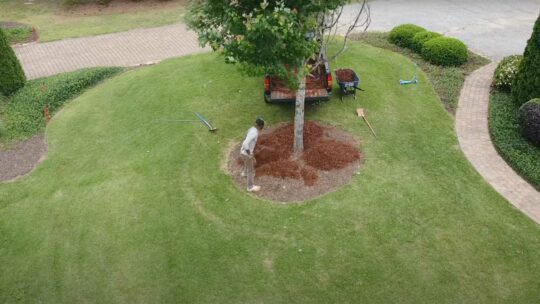Long before he hit the MLF circuit, Brian Latimer spent most of his time perfecting lawns. Lots, and lots, of lawns. But through those countless jobs he picked up a few tips here and there that didn’t just make him a better landscaper, but shaped his outlook on life, as well. So, follow along in this Backyard Life video as BLat provides a lowdown on the biggest mowing and lawn care mistakes to avoid. And, learn how his time in lawn care helped make him the bass pro he is today.
Lawn Care to Fishing Pro
Latimer grew up in a family-owned landscaping company that started by just mowing grass—but grew into something bigger. All the experience, know-how, and wrench turning in his past job informed how he approaches his current job. And there are, surprisingly, a good number of similarities between the two.
With all the money BLat invests into all his equipment, it baffles him that more folks don’t put more effort into caring for their own gear. And since he isn’t a NASCAR driver with a pit crew, it falls on him to do the maintenance himself.
The same goes for lawn care. If something broke while out on a job, he couldn’t afford to sit back and wait for it to be fixed. He had to get it done right then and there to keep on mowing. Growing up in that environment, says Latimer, helped how he addresses problems and fixes them on the fly.
Keeping Your Blades Sharp
Latimer’s first mistake to avoid was instilled in him by his dad, whose biggest pet peeve was dull mower blades. This is a gaff a lot of first-time homeowners or casual mowers make, he says, as they might not be aware of the issues dull blades cause. In fact, these problems extend beyond the health of their equipment—they impact their lawn’s health, too.
This is especially apparent when mowing tough, tall grasses—such as Bahiagrass. It’s hard on sharp blades, and even more punishing on dull ones. So, says Latimer, you have to make sure your blades stay properly sharpened to preserve your engine.
Secondly, when you move on to finer grasses, such as Fescue, Bermuda, or Zoysia, a dull blade can harm your lawn. Latimer likens a dull blade to a dull pair of scissors. Instead of leaving a clean cut, it rips and tears for an unsightly finish. So when you routinely sharpen your blades, you’re saving both your grass and your machine.
Lawn Care and Mowing Awareness
An “underrated” skill, per Latimer, is simply possessing general awareness for your surroundings. That means knowing the impact of what you’re doing has on the things and people around you, knowing what’s in front of you, and anything that can potentially happen. When piloting his bass boat—which goes pretty fast—he’s always thinking ahead. He has to take into consideration his speed, direction, and where he’s looking. Driving a lawn mower isn’t that much different.
That said, one of his biggest lawn care pet peeves is seeing people mow with their discharge chute facing the road. Not only does it amount to a lack of foresight for how it might impact you, but it also endangers people using the road or sidewalk. And, it adds a whole extra layer of cleanup that’s easily avoided by just turning your mower around.
An Affinity for Wet Grass
While it might sound odd, one of Latimer’s favorite things as a landscaper was wet grass. Generally, it’s a horrible idea to mow a wet lawn. But when he was running his landscaping company, every time it was too wet, windy, or cold, it meant he didn’t have to work. Which meant he could spend even more time on the water.
When you do mow on wet grass, it creates a few problems. First of all, it’s really rough on your equipment. All that discharge sticks to your deck and hardens, which makes your engine work harder and mower wear down even quicker. And that’s not to mention the impact on your lawn. Tire tracks might look great on a pit bike track but leave your yard looking worse for wear.
And that’s it! Before you hop on your Exmark for your next session, make sure to keep these tips from BLat in mind. It’ll help ensure a better, safer experience for you, your neighbors, and your lawn.



